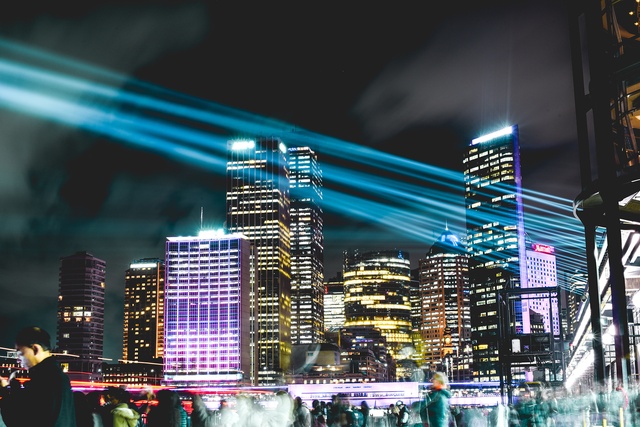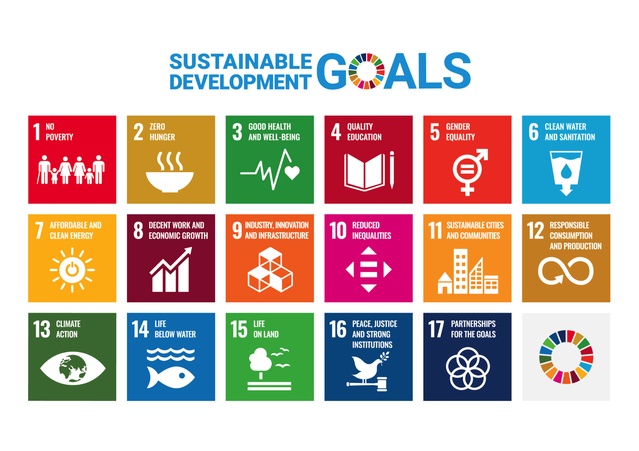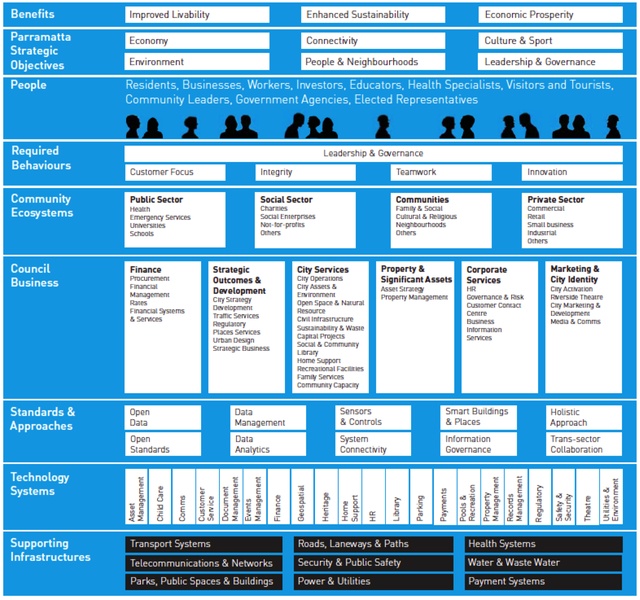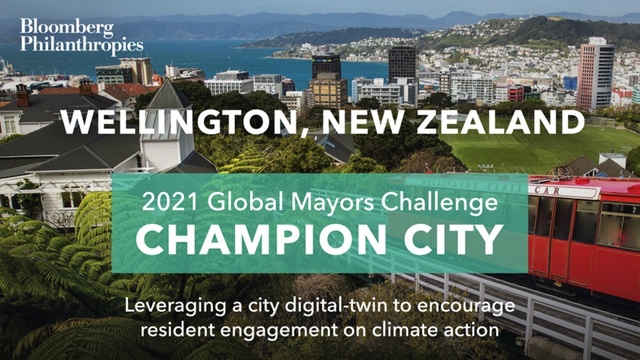Future of Design: Towards smart urban environments
As our regular Future of Design columnist, Maria Mingallon, takes a break to pursue further study, we hear from guest contributor Gabriela Mazorra, who recently completed a Master of Technological Futures at the Tech Futures Lab. Mazorra is a data expert and, here, she explores what the cities of our future need in order to create healthy environments and inhabitants and how some urban areas around the world are leveraging data to meet these needs.

Today, more than half of the world’s population lives in cities, with the total urban population expected to increase to 68 per cent by 2050 according to a 2018 UN report. To meet this demand, address environmental sustainability and deliver public services, cities have turned to technology and started developing innovative solutions to become “smarter” in the use of their infrastructure. In doing so, cities are increasingly becoming urban laboratories and testing grounds, with contrasting outcomes, as envisioned decades ago by Jane Jacobs in The Death and Life of Great American Cities (1961).
Without a doubt, achieving the UN’s Sustainable Development Goals (SDGs) by 2030 requires comprehensive mobilisation. Amongst this guiding framework for thinking about the future of place, SDG 11 seeks to transform the way we build and manage urban spaces to make cities inclusive, safe, resilient and sustainable. Architects and designers are key players in devising liveable urban environments consisting of resilient designs and spaces that cater for the wellbeing of the community and support the green shift.

The 4th Industrial Revolution, a term coined by Klaus Schwab, founder of the World Economic Forum, keeps reducing the gap between the digital, physical and biological worlds. Amongst the enabling technologies of this sweeping transformation are artificial intelligence, cloud computing, robotics, 3D/4D printing (3D shapes able to morph into other forms in response to environmental stimulus over time), the Internet of Things, augmented and virtual reality, advanced wireless technologies, and Big Data. The convergence of some of these technologies, and an effective use of information obtained from pairing the physical and virtual worlds, are the drivers of the digital twin concept. Following its origins in NASA and successful implementation in manufacturing, digital twins promise operational efficiencies as well as dynamic decision making and better social, economic and environmental outcomes for citizens.
As Maria mentioned in her article “Seeing is believing“ in this series, data is the new black and it is the fertile soil required for smart urban environments to flourish. This idea is also embodied by WeWork’s mantra, “buildings equal data”, and the idea that data is becoming an essential ingredient to the traditional brick and mortar recipe. The ability to capture and use the feedback loops that data provides to shape spaces will continue to gain importance in the industry. And, while this is how nature works as argued by Scott Turner in The Tinkerer´s Accomplice: How Design Emerges from Life Itself (2007), architects like Marc Kushner go even further and promote tapping into the wisdom of the crowd years before a building is created with the help of social media. If you have not watched it already, in his TED Talk “Why the buildings of the future will be shaped by … you“, he explains the centrality of the public in the design process.
In this context, you might be asking yourself: how are these principles being applied beyond individual buildings and to the scale of cities; how are smart urban environments developing? There are multiple shades of “smart” and a wide-ranging group of cities experimenting with smart solutions in critical areas such as urban planning, sustainable energy, social integration, transport strategies or talent attraction.
Since 2019, The Institute for Management Development, in collaboration with Singapore University for Technology and Design, has released the Smart City Index every year with profiles and historic evolution of each of the cities featured. The survey collates information gathered from hundreds of citizens from 109 global cities and focuses on five key areas: health and safety, mobility, activities, opportunities and governance. In 2020, Singapore, Helsinki and Zurich finished at the top and we saw several European cities falling in the rankings as well as significant changes in underdeveloped cities. The following video summarises the results.
Some cities are innovating from scratch and creating custom build environments. A great example is Kalasatama: once a brownfield district in Helsinki (Finland), it has been transformed into an avant-garde city district and an experimental platform where new solutions resulting from the joint collaborative effort of residents, companies, council officials and researchers are piloted. Based on the idea that time is residents’ most valuable resource, the co-created vision is for everyone to gain one extra hour every day to spend on whatever brings them joy. They propose to achieve this by improving the flow of traffic and logistics and aiming to deliver quality services to the public instead of the other way around. The goal is for smart services to improve both quality of life and time management.
The City of Parramatta, a suburb of Sydney (Australia), is another test case with the capacity to influence the future planning and architecture of cities. In 2015, it became the first local government in New South Wales to adopt a Smart City Masterplan which outlines a number of projects that leverage data and technology to become future ready and improve citizens´ lives experiences.

One of these initiatives is The Melrose Park: Smart Planning for Climate Responsive Neighbourhoods pilot project involving the installation of a network of 70 environmental sensors throughout the site and nearby streets. These sensors will monitor conditions such as temperature, humidity, air quality, noise and stormwater before, during and after construction to help improve the area’s liveability and inform future planning. In this 25-hectare industrial site, the construction of 5,000 new residential dwellings is projected over the next 10 years.
Not all cities have the ability to start over and many inhabited cities need to strike a balance between their heritage and demands from residents and visitors. Interestingly, some cities are making the most of the “old meets new” concept. In Italy, the cities of Bari and Matera were early adopters of the 5G wireless technology. This has enabled remote visits to Matera’s main tourist attractions and archeological sites using virtual reality that allows visitors to enjoy an immersive experience following the directions given by a local guide. In Bari, workers involved in the maintenance of ship engines receive remote assistance and training using a Smart Helmet built with augmented reality.
Moreover, there are case studies on urban and educational hackathons in smart cities with a heritage context like the one that took place in the city of Rauma (Finland) that show the possibilities of integrating the historical uniqueness of this Word Heritage Old Town with modern city services. Urban innovation is not reserved for the new and shiny elite, and cultural heritage may contribute to sustaining productivity and enhancing the livability of certain places.
Closer to home, the Wellington City Digital Twin Project developed a digital cities twin tool that utilizes advanced gaming technology to create large-scale city visualizations comprising integrated and real-time data. It is also pleasing to know that both Wellington and Auckland are amongst the 50 Champion Cities selected for the 2021 Global Mayors Challenge, a global innovation competition aimed at identifying and accelerating ideas to respond to the COVID-19 pandemic. Finalists are busy refining their ideas and still have work to do until October. The list of the fifteen winning cities to receive a $1 million prize along with multi-year technical assistance for the implementation and scaling of their idea won’t be published until early 2022.
Clearly, cool gadgets and technology will not fix cities’ complex problems, and some believe the conversation needs to shift towards openness instead of smartness. As author Ben Green warns in The Smart Enough City (2019), “…contrary to the fables told by smart city proponents, technology creates little value on its own—it must be thoughtfully embedded within municipal governance structures.” As proposed by Paula Kwan, former Director of the Civic Innovation Office for the City of Toronto, among others, the conversation needs to be focused on advancing a community’s experience, using technology to serve our lives – not vice versa – and making cities better for people and business by encouraging citizen participation and transparency.

And because what is not measured cannot be improved, the UN’s United for Smart Sustainable Cities (U4SSC) initiative developed a set of 91 international key performance indicators to capture a city’s performance in three dimensions: Economy, Environment and Society and Culture. These have already been implemented by 100 cities worldwide and provide cities with the means for self-assessment and monitoring of their sustainable development progress to achieve the SDGs. There are city snapshots available on their website, which are worth taking a look at. Among the cities featured you will find Esperanza and Santa Fe (Argentina), Gjøvik and Ålesund (Norway), Moscow (Russia), Valencia (Spain), Pully (Switzerland) and Bizerte (Tunisia).
On the other hand, the World Council on City Data led the development and implementation of three international standards on city data that have been published by the International Organization for Standardization (ISO). The ISO 37120 Series includes ISO 37120 - Indicators for Sustainable Cities, ISO 37122 - Indicators for Smart Cities, and ISO 37123 - Indicators for Resilient Cities. As the scrutiny and oversight on Environmental, Social and Governance (ESG) impacts evolves and becomes more rigorous, the importance of this criteria to evaluate the contribution of information and communication technologies to make more efficient and sustainable urban environments may also increase.
Before I go and hand over back to Maria, it is worth pointing out that data security and privacy concerns derived from smart cities initiatives and governments adopting open data platforms are not new, particularly due to the over-collection and subsequent sharing of data with third parties. Part of the success of these projects will depend on addressing these concerns and consistent public policies that provide suitable guarantees over time. No need to go any deeper on the subject but certainly something to bear in mind insofar as the current solution, usually in the form of a data-sharing agreement exclusive between the parties, will probably not stand the test of time. For anyone interested in the subject, I recommend you head to literature on data stewardship and data institutions from The Gov Lab (New York), the Open Data Institute (UK) or the Aapti Institute (India).
In conclusion, the train has left the station. Harnessing the great wave of urbanisation that lies ahead depends on our ability to have an open mindset, embrace community-driven innovation and rethink the future with citizens at the centre. As recognised in the report published last May for the New Zealand Infrastructure Commission, Preparing for technological Change in the Infrastructure Sector, developed by Beca Ltd and Polis Consulting Group, the opportunity is there for those that are ready to embrace it with the Government expecting to spend over $21bn in the short to medium term. Are you ready to take action?
Read more from the Future of Design series here.









